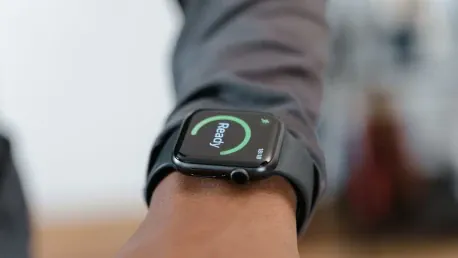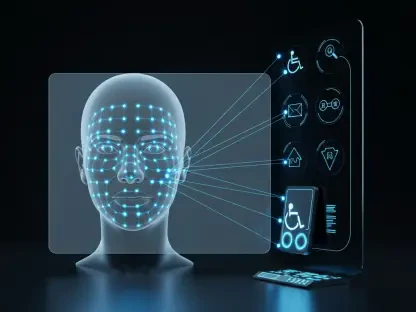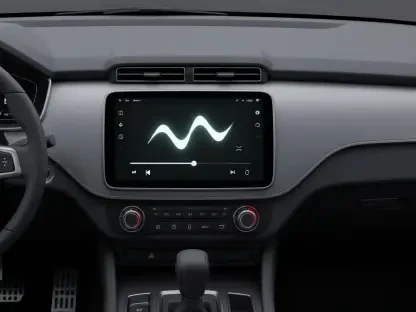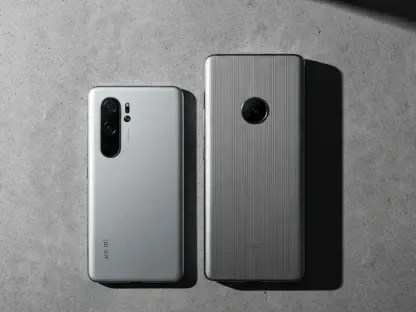Wearable technology, commonly referred to as ‘wearables,’ encompasses electronic devices designed to be comfortably worn on the body as accessories or integrated into clothing. The innovation and popularity of wearables are burgeoning, with significant advancements consistently propelling the technology forward. Wearables are largely celebrated for their applications across various sectors, particularly navigation, interactive gaming, efficiency improvement, and contactless payments. However, the focus of this analysis is on their critical role in medicine and healthcare. In this realm, wearables promise to provide a transformative impact on monitoring, diagnostics, and personalized treatment regimens, paving the way for a new era of healthcare solutions.
The Rise of Wearable Technology in Healthcare
Wearable devices in healthcare can generally be classified into two broad categories: consumer-grade wearables and medical-grade wearables. Consumer-grade wearables include devices like watches, rings, and clothing that monitor basic health and fitness metrics such as steps taken, calories burned, heart rate, oxygen levels, and sleep patterns. These devices provide users with real-time access to their health data, enabling them to make informed decisions about their wellness and routines.
Medical-grade wearables, on the other hand, are more advanced devices like blood pressure monitors, ECG monitors, biosensors, and glucose monitors designed to assist in managing chronic diseases. Medical-grade wearables collect detailed health data and provide healthcare professionals with valuable insights in real-time, promoting personalized treatment plans and reducing the need for frequent in-person appointments. Patients can benefit from continuous health monitoring that can alert healthcare providers to any concerning changes, allowing for quicker interventions and better overall management of health conditions.
The integration of wearable technology in healthcare signifies a shift towards more accessible and efficient health management. By leveraging the capabilities of both consumer-grade and medical-grade wearables, individuals can maintain proactive health monitoring, while medical professionals can enhance their ability to provide personalized care based on accurate, real-time data. This fusion of technology and medicine not only empowers patients but also helps reduce healthcare costs associated with hospital readmissions and emergency visits.
The Promise of Wearable Ultrasound Technology
A groundbreaking development in wearable technology is the introduction of wearable ultrasound devices. These devices represent a significant leap forward by providing precise, real-time monitoring of muscle and bodily motion, which could transform both healthcare and human-machine interfaces. Traditional electromyography (EMG) devices are already used to monitor muscle activity, but they have limitations such as low spatial resolution, poor stability, and a weak signal-to-noise ratio. Echomyography (EcMG), which employs ultrasound waves, offers a promising alternative because it can penetrate deep tissues for high-resolution imaging.
However, traditional EcMG systems rely on bulky, complex transducer arrays, limiting user mobility and consuming substantial power. To overcome these challenges, researchers at the University of California San Diego, supported by the National Institutes of Health, developed a wearable echomyography system. The system features a flexible, silicon elastomer casing containing a single ultrasound transducer, a customized wireless circuit for data processing and control, and an onboard lithium-polymer battery for powering the device. This innovation marks a critical step forward, making high-resolution muscle and tissue monitoring more practical and less invasive.
The wearable ultrasound patch represents a substantial advancement in the integration of healthcare technology with everyday life. Its ability to emit ultrasound waves at controlled intensities and capture radiofrequency signals enables applications such as diaphragm thickness measurement. The high spatial resolution of this technology is crucial for isolating specific muscle movements, which can significantly enhance the accuracy and effectiveness of health monitoring. Utilizing a deep-learning algorithm, the researchers successfully extracted detailed insights from the ultrasound signals, allowing precise detection of muscle movements and promising a wide range of applications in both medical and non-medical fields.
Technological Innovations and Applications
The innovative wearable ultrasound patch allows for significant advancements in the ways health metrics are monitored and analyzed in real time. For instance, one key application of this technology includes monitoring respiratory health. The wearable ultrasound patch was tested to monitor diaphragm activity by assessing the thickness and motion of the diaphragm. It demonstrated the ability to recognize different breathing modes and helped distinguish between breathing patterns of healthy individuals and those with conditions such as COPD. This capability represents a significant advancement in respiratory care, especially for diagnosing and managing breathing-related ailments, providing patients and healthcare providers with a versatile tool to monitor respiratory functions continuously.
The potential extends beyond just respiratory health. The patch was also applied to the forearm to detect hand and wrist muscle activity. A deep-learning algorithm enabled the device to recognize hand gestures with high accuracy, suggesting potential applications in areas such as prosthetics, gaming, and other human-machine interface technologies. This includes practical applications like controlling robotic arms or enhancing virtual gaming experiences, where accurate detection of muscle movements and gestures is critical. The versatility of the ultrasound patch highlights its potential in a range of fields, leveraging its high-resolution imaging to provide precise and real-time feedback.
Moreover, the technology’s ability to provide continuous monitoring and high-resolution data collection opens new avenues for research and development in personalized healthcare solutions. By refining and optimizing this technology, wearable ultrasound devices can become vital tools in preventive healthcare, enabling earlier detection of health issues and improving patient outcomes through timely interventions. The ongoing advancements in this area underscore the transformative impact of wearables in enhancing healthcare delivery and patient quality of life, envisaging a future where medical care is more responsive, personalized, and effective.
Wearable Ultrasound in Mainstream Healthcare
The integration of wearable ultrasound technology into mainstream healthcare promises to revolutionize patient care by bridging the gap between at-home health monitoring and traditional in-hospital diagnostic procedures. The ultrasound patch’s ability to process data wirelessly allows for continuous health tracking without the need for cumbersome equipment, making it feasible for widespread adoption in various healthcare scenarios. For example, the technology holds potential applications in monitoring cardiovascular functions, providing patients with a convenient and non-invasive means to track their heart health regularly.
Recent testing also demonstrated the efficacy of the patch in continuously tracking cerebral blood flow when worn on the temple, further highlighting its versatility. By addressing several limitations, such as improving sensor accuracy, extending battery life, and enhancing data processing capabilities, researchers are continuously advancing the technology to meet the rigorous demands of healthcare applications. In particular, the development of innovative solutions like using gallium-based droplets in a soft silicone matrix has significantly improved acoustic impedance while maintaining flexibility, crucial for wearable applications. These advancements underline the potential of wearable ultrasound technology to provide reliable, high-resolution health monitoring on a continuous basis.
With the ability to perform real-time, high-resolution imaging of internal tissues, wearable ultrasound devices are poised to become indispensable tools in various medical fields. Their applications could range from routinely monitoring chronic conditions at home to supporting complex diagnostic procedures in hospital settings. This evolution of wearable technology represents a shift towards more personalized and patient-centric healthcare, where data-driven insights enable more precise and proactive interventions. As the technology continues to evolve, the future of healthcare is set to be transformed by wearable ultrasound devices, ensuring that patient care becomes more efficient, accessible, and effective.
Market Dynamics and Industry Adoption
The market for wearable health devices is expanding rapidly, with projections indicating a worth of $70 billion within the next four years. Consumer-grade wearables dominate the market due to their widespread availability, accessibility, and compatibility with smartphones, making it easy for users to integrate these devices into their daily lives. However, the growing interest in medical-grade wearables highlights the industry’s recognition of the potential of these devices in managing chronic health conditions and reducing healthcare burdens through remote monitoring.
Medical-grade wearables, although facing stringent regulatory approvals, are expected to see growing adoption. Their ability to provide real-time, detailed health data can transform the way chronic diseases are managed, offering continuous monitoring that reduces the need for frequent in-person appointments. This shift towards remote healthcare not only enhances patient convenience but also alleviates pressures on healthcare systems, potentially leading to cost savings and more efficient resource utilization. The technological advancements seen in wearable ultrasound patches further bolster this trend, demonstrating how innovative solutions can bridge gaps in current healthcare practices.
As the wearable health device market continues to grow, collaboration between technology developers, healthcare providers, and regulatory bodies will be crucial in driving adoption and ensuring the devices’ efficacy and safety. The integration of artificial intelligence and machine learning algorithms in processing health data collected by these devices opens up new possibilities for accurate and early diagnoses, paving the way for a future where wearable technology plays a central role in health management. This dynamic market is poised to redefine the healthcare landscape, emphasizing the importance of continuous innovation and regulatory support to fully realize the potential of wearable health devices.
Key Industry Players
Several key industry players are leading the charge in developing and integrating wearable technologies into healthcare, leveraging their expertise and resources to push the boundaries of what’s possible. Medtronic, a prominent leader in medical devices, has been exploring wearables for diagnostics and remote health monitoring. Their BioButton wearable, developed in partnership with BioIntelliSense, tracks vital signs continuously, reflecting the company’s focus on integrating AI for productivity enhancements. With a substantial market presence and ongoing investment in new technologies, Medtronic stands to benefit significantly from innovations in wearable ultrasound, further solidifying its position as a leader in the healthcare sector.
Another major player, GE HealthCare Technologies, specializes in medical technology with a focus on diagnostic imaging and patient care solutions, including ultrasound advancements. Collaborations with companies like Biofourmis to extend patient monitoring technologies to home environments highlight their commitment to innovative patient care. GE HealthCare’s initiatives in portable, wireless sensors and AI-driven patient monitoring establish them as key players in integrating wearable ultrasound technologies into mainstream healthcare. By leveraging their expertise in medical imaging and patient care, GE HealthCare is well-positioned to drive the adoption of wearable ultrasound devices and enhance the delivery of personalized healthcare solutions.
These industry leaders are not only contributing to the development of cutting-edge wearable technologies but are also setting the standards for quality and reliability in the industry. Their efforts in advancing wearable ultrasound technology underscore the transformative potential of these devices in healthcare, promising enhanced patient outcomes and improved quality of life. As the field continues to evolve, the collaboration between innovators, healthcare providers, and regulators will be essential in realizing the full potential of wearable ultrasound devices, paving the way for a future where healthcare is more accessible, efficient, and personalized.
Conclusion
Wearable technology, often known as “wearables,” consists of electronic devices meant to be worn comfortably on the body, either as accessories or integrated into clothing. The growth and innovation within this field are surging, continually driven by significant technological advancements. Wearables are notably praised for their diverse applications across various sectors, including navigation, interactive gaming, efficiency enhancement, and contactless payments. While these uses are remarkable, this discussion centers on their essential role in medicine and healthcare.
In the medical and healthcare sector, wearables hold the potential to revolutionize how we monitor health, conduct diagnostics, and personalize treatment plans. These devices can continuously track vital signs, such as heart rate, blood pressure, and oxygen levels, providing real-time data to both users and healthcare providers. This real-time data collection can lead to earlier detection of potential health issues, allowing for timely interventions.
Furthermore, wearables can support chronic disease management by providing patients with reminders for medication, exercise routines, and dietary guidelines. Personalized treatment regimes become more feasible as wearables deliver ongoing data, which can be analyzed to tailor medical advice and treatments to individual needs. This ushers in a new era of healthcare, where technology and personalized medicine work hand in hand to improve patient outcomes and quality of life.









